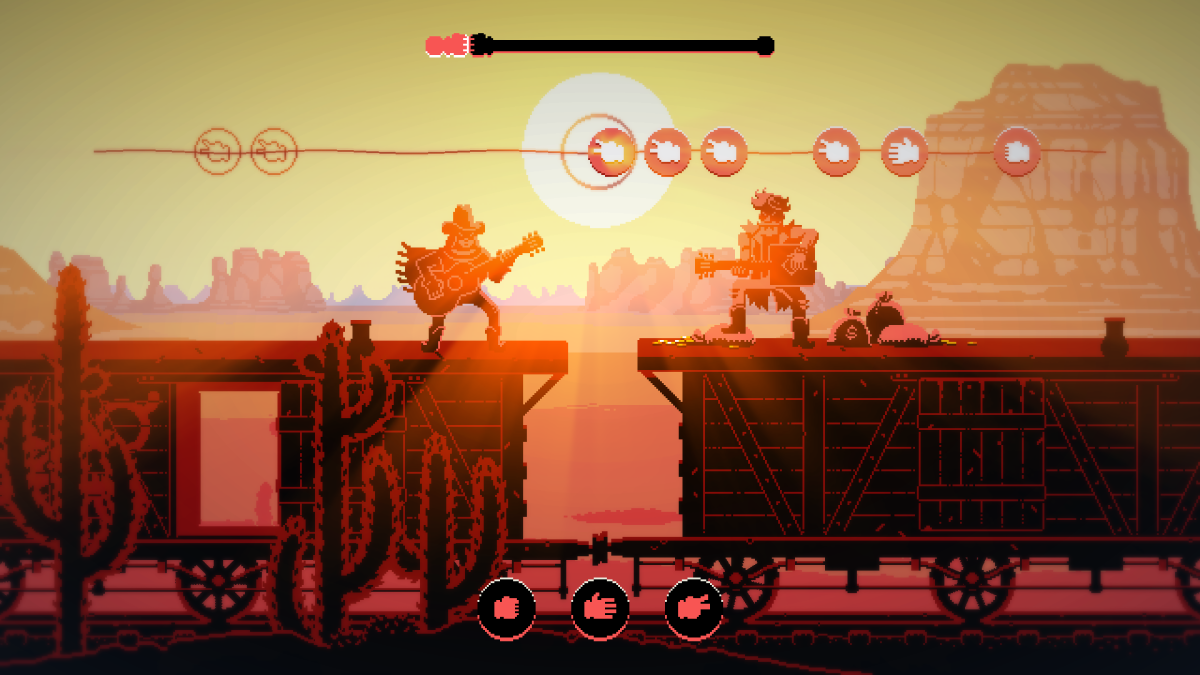
Imagine this: it’s the year 1999, and you’re at the local arcade. Past the skee-ball machines and the Pac-Man cabinet, there’s a bright new game that catches your eye— but where are the buttons? Where is the joystick? And what’s with all the big arrows on the ground? You step up on the platform and discover the catch—the controller is you. Your feet tap the arrows that pop up on screen as the music plays, getting more energetic by the second. You dance to the rhythm of the music, racking up points as you go! But you have to be smart—if you’re off beat or you tap the wrong arrow, you lose points!
When Dance Dance Revolution (DDR) was released in North America, it wasn’t the first “rhythm game” ever created—but it has become the quintessential example of the genre. Leading technology website Ars Technica defines the genre as games that use “music as a guiding method of showing the player when to push buttons or move the analog or digital stick on the controller in a way that matches the beat of the music.” Games like DDR, Guitar Hero, and PaRappa The Rapper take a direct approach, with players tasked to dance, play instruments, and rap to progress through the game. Rhythm as a tool for play can be used by developers in a myriad of unique ways to solve puzzles, locomote in game spaces, and improvise new musical phrases. For example, Crypt of the NecroDancer combines the style of a roguelike exploration game with a rhythm mechanic that affects the player’s ability to successfully defeat enemies, collect treasure, and explore more of the game’s setting.
While DDR or Guitar Hero might not teach a player to dance or play an instrument, it certainly invites players to test their coordination, stamina, and physical creativity. Rhythm games that use motion-sensing technology, like a Wii remote, Kinect, or VR headset and controllers, can allow players to use their whole bodies to engage with the music. Anecdotal evidence suggests that games like DDR can be used in physical education curriculum to provide engaging aerobic exercise. Games like Guitar Hero or Rock Band are sometimes used in physical therapy for amputees and stroke patients to help them develop coordination skills. It should also be noted that rhythm games in particular have helped to popularize the concept of alternative controllers, ultimately making all games more accessible and functional for a broader audience. Foot pedals, controller mats or platforms, and specially shaped controllers are just a few innovations in gaming that can be credited to the genre.
Rhythm games are, at their most essential, celebrations of music and its power to engage people’s minds and bodies. Video games, like many works of time-based media (see some examples from SAAM’s collection in the exhibition Musical Thinking: New Video Art and Sonic Strategies), are both visual and aural experiences that rely on sound as well as sight to communicate ideas. Whether it’s an indie game with a powerful soundtrack, a classic console game with an iconic sound design, or a rhythm game that requires players to stay “on beat” to win, games and music are deeply intertwined, no matter the genre.
SAAM explores the connection between music and gaming at its annual celebration of the art of video games, SAAM Arcade 2023—Thinking Musically. The event highlights eight indie games in the Indie Developer Showcase alongside classic console and arcade games—including Dance Dance Revolution. SAAM Arcade 2023—Thinking Musically is July 22, 2023 from 11:30 a.m. to 7 p.m. in the museum’s Kogod Courtyard.






















